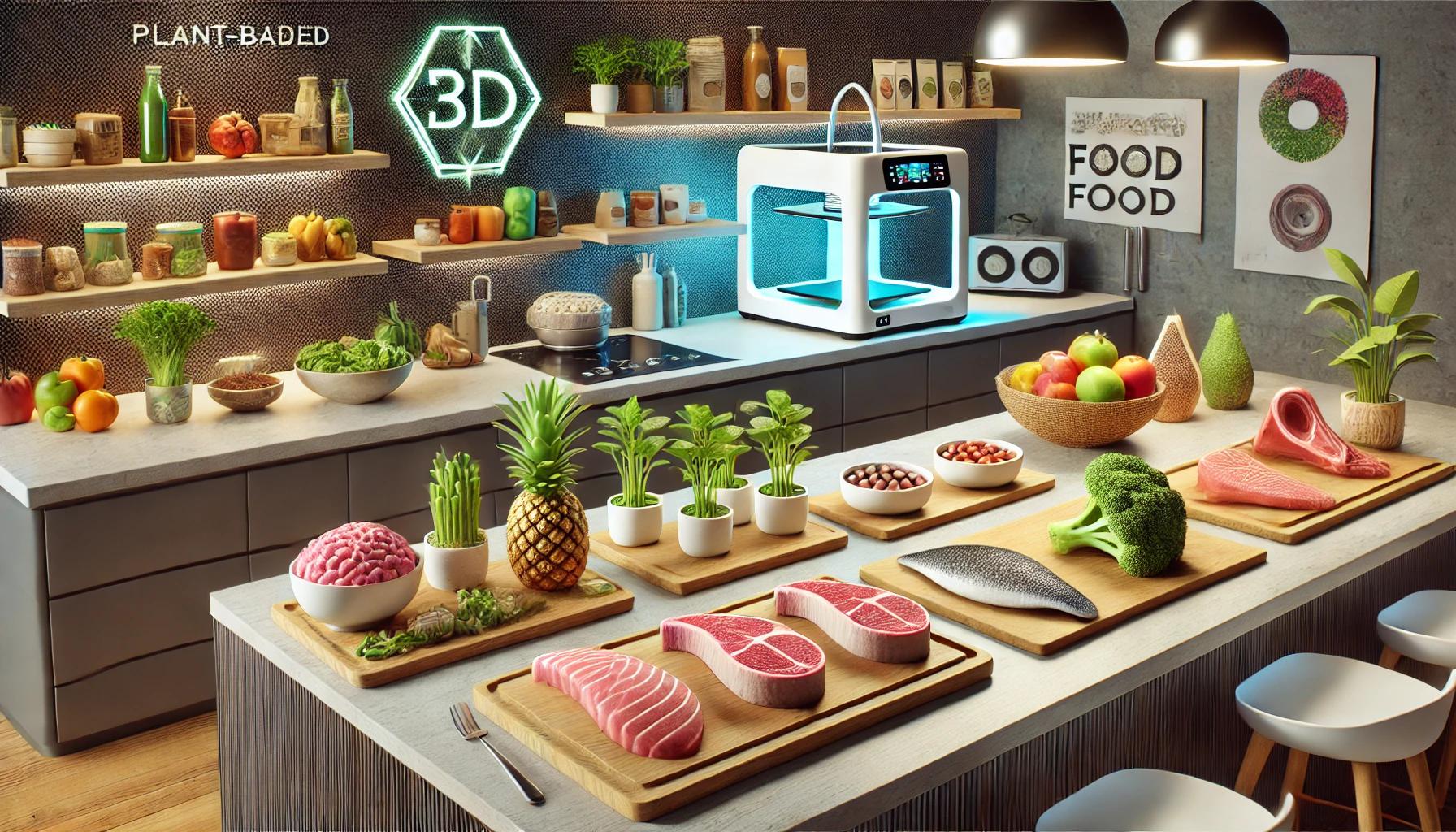Plant-Based Success vs. 3D-Printed Resistance: Consumer Perceptions of Meat Alternatives
A study by ETH Zurich and Texas Tech University found that while plant-based meat alternatives are generally accepted by Swiss consumers, 3D-printed and cultured products, particularly those made from byproducts, face significant resistance due to concerns about healthiness and naturalness. The study highlights the importance of addressing these concerns to boost consumer acceptance.

A study conducted by researchers from ETH Zurich's Department of Health Science and Technology and Texas Tech University aimed to explore the acceptance of cultured, plant-based, and 3D-printed meat and fish alternatives among Swiss consumers. With the increasing demand for animal proteins and the environmental consequences of traditional meat production, the study sought to assess how consumers perceive these novel food technologies in terms of healthiness, willingness to buy and eat, and their perceived environmental friendliness. The study found that although plant-based alternatives were generally well-received, there remains significant resistance to 3D-printed products, especially those made from byproducts, signaling the challenges ahead for mainstream adoption.
The Rise of Alternative Proteins
The increasing demand for meat, coupled with the growing environmental impact of food production, has led to the development of alternative protein sources such as plant-based, cultured, and 3D-printed products. These alternatives aim to address issues related to deforestation, overfishing, and animal welfare while providing options for personalized nutrition and reducing food waste. The study focused on understanding consumer perceptions of these products, comparing them with conventional meat and fish, and identifying the key factors influencing consumer willingness to adopt these alternatives. The study’s results indicate that while plant-based alternatives are performing relatively well, products involving 3D printing especially those made from animal byproducts are struggling to gain acceptance across several key measures.
3D-Printed Food: Promise and Challenges
Plant-based meat alternatives, made primarily from legumes, cereals, and fungi, are gaining popularity in some consumer segments. These products aim to replicate the taste and texture of conventional meat but often fall short in delivering the complex structure consumers expect. Three-dimensional (3D) food printing has emerged as a promising technology capable of addressing these shortcomings by allowing the creation of customizable food textures and shapes. However, despite its potential benefits in terms of sustainability and personalized nutrition, 3D-printed food continues to face skepticism from consumers. Most notably, concerns over artificiality and health risks persist, with many consumers still viewing these products as overly processed and unnatural.
The Appeal of Cultured Meat and Fish
Cultured meat, produced by growing animal muscle cells in a bioreactor, offers another alternative to traditional meat. This method promises benefits such as reduced water and land usage, fewer environmental impacts, and improved animal welfare. Similarly, cellular agriculture applied to fish could reduce reliance on wild fishing and eliminate problems like antibiotics and microplastics in fish products. However, cultured meat and fish products also face consumer resistance, largely due to perceptions of their unnaturalness. This sentiment often results in feelings of disgust and concerns about the safety and nutritional value of such products, hampering their widespread adoption.
Consumer Reactions: Healthiness and Willingness to Buy
The research team surveyed Swiss consumers to measure their acceptance of five different meat and fish alternatives: 3D-printed plant-based meat, cultured meat, 3D-printed cultured meat, plant-based meat, and 3D-printed byproducts of meat. These alternatives were evaluated against four key acceptance measures: perceived healthiness, willingness to buy, willingness to eat, and perceived environmental friendliness. In addition to these alternative products, conventional steak and salmon were also assessed to provide a benchmark for comparison. Overall, plant-based alternatives emerged as the most acceptable among consumers, performing well across all acceptance measures, especially in terms of healthiness and willingness to eat. In contrast, 3D-printed byproduct meat and fish alternatives were rated the lowest in terms of healthiness, environmental friendliness, and willingness to eat, reflecting the challenges these products face in gaining consumer trust.
Addressing Consumer Concerns for Future Success
The study revealed that perceived healthiness and environmental friendliness were the most important predictors of consumer willingness to eat these alternatives. Consumers who viewed the products as healthy and environmentally friendly were more likely to express interest in trying them. Demographic factors such as age, gender, and education also played a role, with younger consumers and men showing greater willingness to eat cultured meat, while older individuals and those with strong attachments to traditional meat were less inclined to try plant-based or cultured alternatives. Interestingly, while cultured fish was perceived as one of the healthiest options, 3D-printed fish made from byproducts was viewed unfavorably, suggesting that consumers are not yet convinced of the benefits of utilizing food byproducts in novel food technologies.
Despite the potential environmental and health benefits associated with these alternatives, conventional steak and salmon were still perceived as healthier and more desirable by most consumers. This indicates that alternative proteins, particularly those produced through 3D printing and cellular agriculture, still have a long way to go before they can compete with traditional meat and fish products in terms of consumer acceptance. The findings suggest that providing more information about the health and environmental advantages of these alternatives may help improve their public perception. However, overcoming the deep-seated skepticism and concerns about unnaturalness associated with these products will likely require targeted education and marketing strategies that highlight their benefits while addressing consumer fears.
While plant-based alternatives seem to have established a foothold among consumers, 3D-printed and cultured products, particularly those made from byproducts, face significant hurdles. The study emphasizes the importance of addressing consumer concerns about healthiness and environmental impact and suggests that a greater focus on these factors may help improve acceptance of these novel food technologies.
- FIRST PUBLISHED IN:
- Devdiscourse










